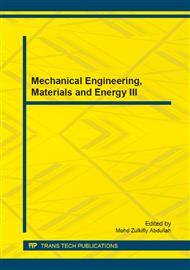p.14
p.18
p.23
p.28
p.34
p.38
p.42
p.47
p.51
Research on the Activity of Calcium Oxides under Various Calcination Temperatures
Abstract:
In new dry way predecompostion cement production, after preheating, raw meal comes into a calciner, and occurs decomposition reaction, then freshly generated CaO comes into a solid-phase reaction process in the kiln. The three stages are closely related and interacted on each other. The formation rate of clinker mineral phases is closely related to the activity of CaO generated by the decomposition reaction, and high activity CaO is helpful to accelerate the formation of mineral phases and decrease the corresponding calcining temperature. However, there are large differences in activity values of CaO gennerated under various calcination conditions, and differet activated CaO has a different effect on the solid-phase reaction and dynamics of clinker formation. In this paper, in order to study the influence of different decomposition temperatures on the activity of generated CaO during solid-phase reaction, the content of free CaO after the reactions between the decomposition products of limestone under different calcination temperatures and SiO2 was determined by chemical analysis, and the content of CaO involved in the reaction was calculated. The results show that at the limestone decomposition temperature of 900oC, the content of CaO participated in the reaction in clinker was increased, CaO activity was increased, these all were beneficial to the chemical reaction. Excessive decomposition temperature can decrease the reaction activity of CaO, so an appropriate decomposition temperature is necessary to make the majority decomposition of raw meal completed in the calciner, and ensure that generated CaO maintained a better activity state into the kiln to participate in the solid state reaction.
Info:
Periodical:
Pages:
34-37
Citation:
Online since:
December 2013
Authors:
Price:
Сopyright:
© 2014 Trans Tech Publications Ltd. All Rights Reserved
Share:
Citation:


